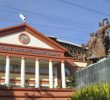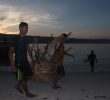By the Policy Study, Publication and Advocacy (PSPA) Program
Center for People Empowerment in Governance (CenPEG)
MANILA — The pre-election surveys (PES) conducted by the country’s leading pollsters show the voting preferences of the country’s electorate in the May 14 mid-term elections. Conducted regularly since October last year, the surveys done by the Social Weather Stations (SWS), Pulse Asia and, to some extent, the non-profit IBON, showed opposition candidates for the senatorial race under the Genuine Opposition (GO) pulling away from the administration ticket, Team Unity (TU). Indeed, the latest surveys reveal that between seven to eight opposition candidates, led by Loren Legarda, are the choice of the respondents, with only about two to three administration bets making it. Two independent candidates, Francis Pangilinan and Gregorio Honasan, fill up the rest of the “Magic 12” seats that are up for grabs in the elections.
The surveys also show quite similar trends for the House and local government elections.
Several implications can be inferred from the survey results that show the voting preferences of Filipinos if elections were held today. Definitely, the results will likely create a bandwagon effect especially among voters who remain undecided on whom to vote. Whether, however, the surveys predict conclusively the outcome of the elections or are translatable into actual votes remains speculative since, after all, anything can still happen within the next 30 days.
Question is, do the surveys serve any purpose? As a means of scientifically weighing the public pulse, the surveys on voting preferences are useful; a few administration candidates admit that the results are a wake-up call to them. For what reasons the respondents decide on their choice of candidates are not reflected in the surveys, however. Using a representative sample numbering from at least 1,200 to 1,800 respondents chosen nationwide and conducted in a week’s time, the surveys normally use face-to-face interviews in asking respondents their preferred candidates. Otherwise, respondents who are chosen randomly are asked to fill in sample ballots.
The official results and news releases of the pollsters reveal only the names of candidates picked by the respondents, their rankings and percentages of the votes. Since what made the respondent determine his or her choice of candidate is not indicated, it is safe to say that questions dealing on such a significant matter were probably not included in the surveys. But, definitely, it is even plausible to say that many respondents had their own different reasons for preferring one candidate over another � a decision which, unfortunately, neither the press nor the public would be able to know.
Insofar as they signified voting trends and projections, the surveys seem credible enough. Not only were the findings especially of the SWS and Pulse Asia showed consistent patterns since late last year, the results of both their surveys appeared to match in the main. Their pre-election findings in 2001 and 2004 that the party-list group Bayan Muna was leading in the party-list race turned out to be prophetic based on the outcome of the election. Both groups also said that their surveys were done independently, i.e., they were not commissioned by any interest group or political party.
2007 Elections









